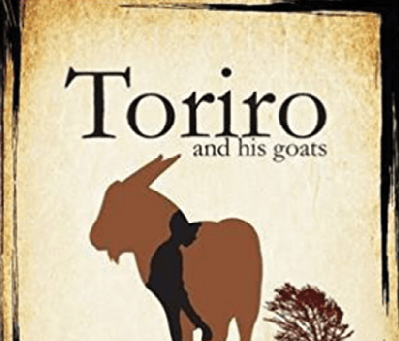
Title: Toriro and his Goats and Other Stories Author: Memory Chirere ISBN: 978-0-9558082-4-1 Publisher: Lion Press (2010)
By Beniah Munengwa
A MUSICIAN might have many songs, but there will always be that one song that is rarely sung along to or known. It could just be a question of fate. Local author, Memory Chirere’s collection of short stories, Toriro and His Goats is one such example of a least-known book in his catalogue of great works.
As funny and always suggestive of the petty and ignored life elements as the author himself, this collection speaks to the rural and urban dwellers in a fine blend of humour and morality as well as the preservation of oral traditions.
The book serves as modified adolescent literature, but speaks to serious “adult issues”, exploiting stories from childhood that still linger in adult minds.
The anthology reinvents the time when adults had a social function of narrating stories and imparting morals. But now, the work face an avalanche of competition, facing the tensions that come with the advent of numerous powerful forms of multimedia that are now at the hands of teenagers.
As a book, it formulates the foundation for a Utopian society as unfair and self-seeking behaviour are rubbished using climaxes that depict good behaviour as conquering all evil.
The consequences of unfair rule are well-announced in the short story, Mbirimi and the Dogs of Dungure. The author, to minimise the seriousness that characterise the gospel of good behaviour, paints a picture of the animal kingdom through the form of dogs that interact on their own accord in the face of repressive leadership by their own kind and by man.
- Chamisa under fire over US$120K donation
- Mavhunga puts DeMbare into Chibuku quarterfinals
- Pension funds bet on Cabora Bassa oilfields
- Councils defy govt fire tender directive
Keep Reading
Mbirimi oppresses the dogs and in the end, Aziko a small boy initiates the process of revolt.
A closer look at Mbirimi’s act demonstrates the suggestive approach that youths can revolt and help in ending a wave of oppression using their untamed ambition. This story was translated from Shona by the author of The Non Believer’s Journey, Stanley Nyamfukudza.
Greed is shown in the title story as leading to extinction while honesty and loyalty are fulfilling virtues worth upholding. The King forcefully devours sacred goats that did not belong to him against the will of the owner.
He drowns into the water body after having transformed into a goat figure. The kingdom also gets equally poisoned by the shadow of mystic goats that bleat each morning without being seen in the physical.
The story imparts the idea that any violations of the sacred will lead to undesirable ripple effects. Nakai, the Girl who Owned Fire, is a call to accept differences and embrace the metaphysical. Nakai possesses supernatural power that she uses to avenge those who cross her path. She uses fire to burn them.
She is then shunned by her peers who distance themselves from her. However, the author equips his narrator with the power to save the headmaster from being destroyed by a huge tree that falls on his office.
The author celebrates the mystic and the esoteric in society, for there is evidence that there are some people who hold these powers, but are deterred from using them for fear of stigma and hence society cannot benefit from them.
The story reads like an extension of Nakai, Uri Kundiuraya! from Chirere’s previous Shona anthology, Tudiki-diki.
Illustrations in this collection are done by Jeffery Milanzi, who improved the way the text read, especially, on the level of engaging children and emphasising the context of the book. The “goaty” cover design, courtesy of designer, Kudzai Chikomo, is also eye-catching.
Catch Me if You Can tells the story of how Madzudzo goes through the haunting complexes of growth. It explores the conflict of expectation and the struggle to meet up with emotional fulfilment. Madzudzo loves Kurai, but Kurai does not like him. Chipo, Kurai’s friend fancies him, but Madzudzo is mean to her.
In the end, Chipo teaches Madzudzo how to relate well with her and a joyful foundation of reciprocity is set.
Orphaned Gidza prefers to call himself Mr. Pint of Harare. His situation relegates him to the peripheries of life. Being a street kid becomes his final destiny. It, however, takes his attempt to steal a soft drink from Mr. Eremendius’ shop to transform his life towards getting back to school.
The story has a relationship with Chirere’s thematic concerns in No More Plastic Balls, as he demonstrates his heartfelt disquiet over for the plight of street children. However, the solution to the street problem may not lie in education alone as the story suggests. School no longer offers that definite guarantee for progress as it did in the past, but rather can be a pathway that leads to wasted decades characterised with stress and no reward to show for it.
But overall, Toriro and His Goats and Other Stories presents a delightful insight into the world of growth in a skillful way that ignites the life of the story, inspiring readers to lift their heads from their phones to finish one or two stories if not all of them in one sitting.











